The Dutch government and entrepreneurs have found each other in an effective way to deal with sudden flooding caused by heavy showers in the Westland area. It is named the Rainlevelr project and it has turned out to be a success. Last week, the 25th participant, Lugt Lisianthus, joined, which was celebrated at the grower's greenhouse.
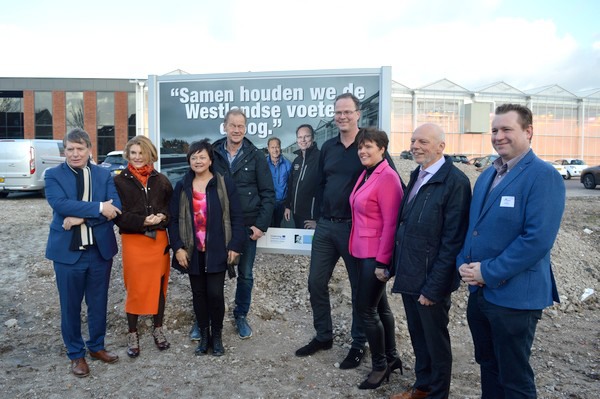
From left to right: Sjaak van der Tak (Glastuinbouw Nederland), Manita Koop (Delfland Water Authority), Monica, Hans, Marcel and Jolanda van der Lugt (Lugt Lisianthus), Leen Snijders (Municipality of Westland) and Wilko Wisse (Lans)
This lisianthus grower had a brand-new high-tech greenhouse built of almost 5 hectares and 'Rainlevelr-proofed' their water basin. It was not entirely coincidental that the sign with the text ‘Together we keep Westland's feet dry’ was unveiled at his doorstep.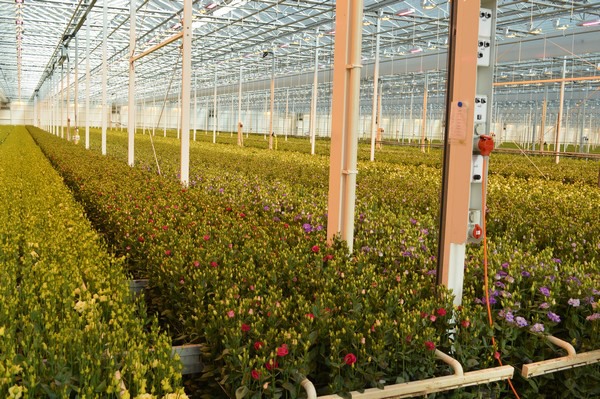
View inside the new greenhouse
With Rainlevelr, growers discharge water when a heavy shower is expected. When it’s raining, they have space to collect the water that falls on the greenhouse, in order to top off the peak. In addition, as tomato grower and Rainlevelr user Wilko Wisse explained, more land for greenhouse horticulture is retained because less land has to be allocated to buffer capacity. Moreover, it is socially appreciated, you keep the neighbors dry. Last but not least, he and all the other involved parties are pleased with the fact that here the often separate worlds of policymakers and entrepreneurs successfully come together. You could even argue that the project gets more added value with every extra hectare, because this results in a larger capacity and is easier to manage.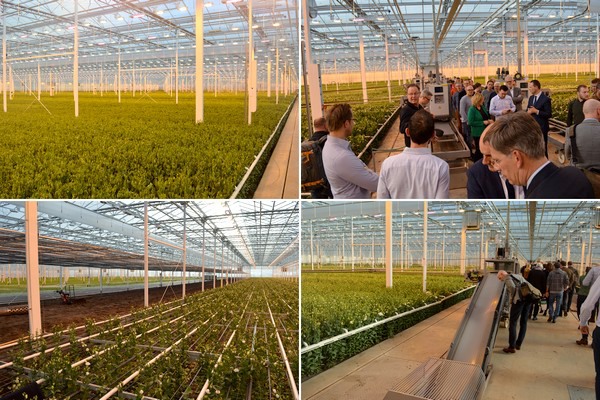
With the connecting of Lugt Lisianthus, the associated glass acreage is 139 hectares, and the buffer capacity is many thousands of cubic meters. The ambition is to reach 200 hectares this year, after which the sky is the limit. In principle, every new basin can be connected free of charge, the municipality pays the connection costs. Existing basins can also be connected with a slightly more complicated artificial method.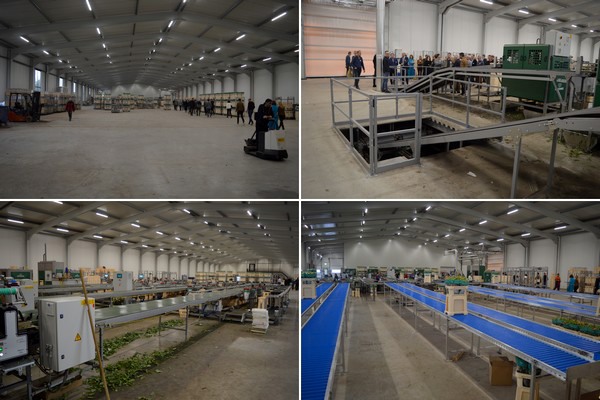
The processing warehouse
The new Lugt Lisianthus greenhouse - 240 x 240 meter cultivation area, plus warehouse and other spaces – is impressive. It is equipped with the latest techniques and innovations, everything has been well thought through. And that was necessary: Lisianthus is an energy-intensive and, moreover, a difficult crop, which means that every saving or cutback has a downside elsewhere. Yet there is much to be gained and the entrepreneur spared no expense. Triple screen, air handling units to enable next generation growing, water at the top and bottom, SON-T and LED combined (in proportion 75-25%), two slightly smaller CHPs (2.6 and 1.6 MW) instead of one large one for an even more efficient handling of the electricity, heat and CO2, a 16,000 cubic meter buffer to store excess heat (water up to 90 degrees), a robot that plants all cuttings fully automatically, a spectacular flower tunnel, a huge warehouse with Bercomex machines to cut and bunch, and more. The so-called inspiration space and surrounding facilities are currently being finalized, next Thursday the trade is welcome for an open day and the following Saturday all interested parties and local residents are welcome to come and have a look.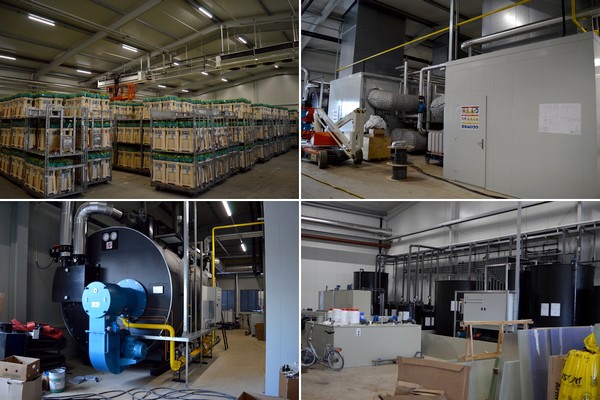
The finishing touches are being put on the cooling system. Furthermore, the CHPs, the mixing machine and an additional boiler, which is mainly used for steaming, can be seen.
Click here for more information (in Dutch) about Rainlevelr.
More information about Lugt Lisianthus can be found here.
